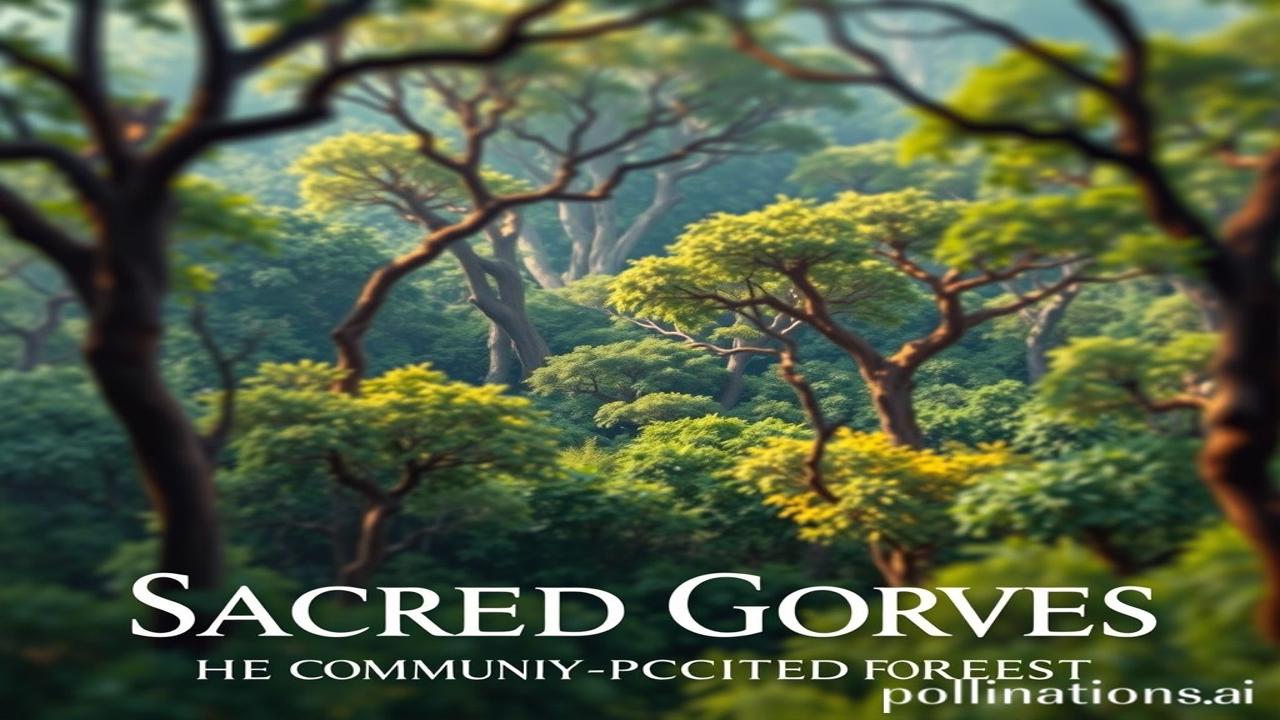Sacred Groves: India’s Community-Protected Forests – A Journey Through Time and Spirit
“Kabhi socha hai, agar ped bol sakte, toh kitni kahaniyan sunaate? Un kahaniyon mein se ek hai Bharat ke sacred groves ki…” Have you ever imagined what stories the trees would tell if they could speak? One of those stories is of India’s sacred groves, hidden pockets of ancient wisdom and community spirit. These aren’t just forests; they are living temples, protected by tradition and reverence. Let’s delve into this fascinating aspect of India’s cultural heritage.
Sacred Groves: Kya Hain Yeh? (What Are They?)
Sacred groves, often referred to as devrai in Maharashtra, kovil kadu in Tamil Nadu, or sarna in tribal regions, are patches of forest that are considered sacred by local communities. These groves are dedicated to local deities or spirits and are protected by social taboos and customs. They represent a unique system of traditional environmental conservation.
These groves aren’t a modern invention; they are ancient practices. Their origins can be traced back to pre-Vedic times. Archaeological evidence suggests that such practices existed in the Indus Valley Civilization. Think about it – even before empires rose and fell, communities were safeguarding these spaces.
Why are they important? Because they represent a harmonious relationship between humans and nature. They are living examples of sustainable practices that have been passed down through generations. They are reservoirs of biodiversity, often harboring rare and endangered species. Plus, they act as crucial watersheds, regulating water flow and preventing soil erosion.
Zamini Sach – Logon Aur Jeevan (The Ground Reality – People and Life)
Imagine a small village nestled near the Western Ghats. “Ma Durga ki kripa se, humare gaon mein kabhi paani ki kami nahi hui,” old Maruti kaka used to say. The villagers believed that the sacred grove, dedicated to Durga Maa, was the source of their prosperity. No one dared to cut a tree or hunt an animal inside the grove.
Every year, during the utsav, the entire village would gather at the edge of the grove. The women, adorned in colourful sarees, would sing traditional songs. The men, beating drums and blowing horns, would perform ritualistic dances. It was a celebration of life, of gratitude, and of their deep connection to nature.
The pujari, a wizened old man with eyes that held ancient wisdom, would remind everyone of their responsibility towards the grove. “Yeh humari dharohar hai, humari shakti. Iski raksha karna humara dharm hai,” he’d say. This sacred grove wasn’t just a forest; it was the heart and soul of their community.
Dharohar Aur Pehchan (Cultural Significance Today)
Even today, in many parts of India, sacred groves continue to play a vital role. They serve as reminders of our cultural roots and the importance of environmental conservation. While modern development threatens these spaces, there is a growing awareness of their significance.
We see echoes of this tradition in various aspects of Indian life. The veneration of trees, the reverence for nature, and the importance of community stewardship – all these are deeply ingrained in the Indian psyche. They connect us to our Bharatiyata and remind us of the wisdom of our ancestors. Think of the tulsi plant in every household, the peepal tree worshipped in villages – these are reflections of the same principle: respecting and protecting nature.
Mazedar Tathya Ya Bhram-Bhanjak (Fun Fact or Myth-Buster)
Log samajhte hain ki sacred groves sirf religious significance ke liye hai, lekin asli sach yeh hai ki yeh biodiversity hotspots bhi hain! People often think that sacred groves are only for religious significance, but the real truth is that they are also biodiversity hotspots! These groves often contain species found nowhere else on Earth, making them incredibly valuable for conservation.
Another misconception is that all sacred groves are dense forests. In reality, they can range in size from a few trees to several hectares, depending on the local customs and ecological conditions.
Drishya Aur Bhavnaye (Visual & Sensory Layer)
Imagine stepping into a sacred grove. The air is cool and moist, filled with the earthy scent of decaying leaves and the sweet fragrance of wildflowers. Sunlight filters through the canopy, creating dappled patterns on the forest floor. The rustling of leaves, the chirping of birds, and the buzzing of insects create a symphony of nature. The temple walls are covered in moss and lichen, whispering stories of time. The soil feels soft and yielding beneath your feet. This is a place where the senses come alive, a sanctuary for the soul.
Antim Vichar Ya Uddharan (Closing Insight or Quote)
“Vasudhaiva Kutumbakam” – the world is one family. Sacred groves remind us that we are all interconnected, that the well-being of humans is inextricably linked to the health of the environment. Let us learn from the wisdom of our ancestors and strive to protect these precious pockets of nature for generations to come. Let’s ensure that these ancient stories continue to be told, not just by the wind rustling through the leaves, but by our actions as well.
